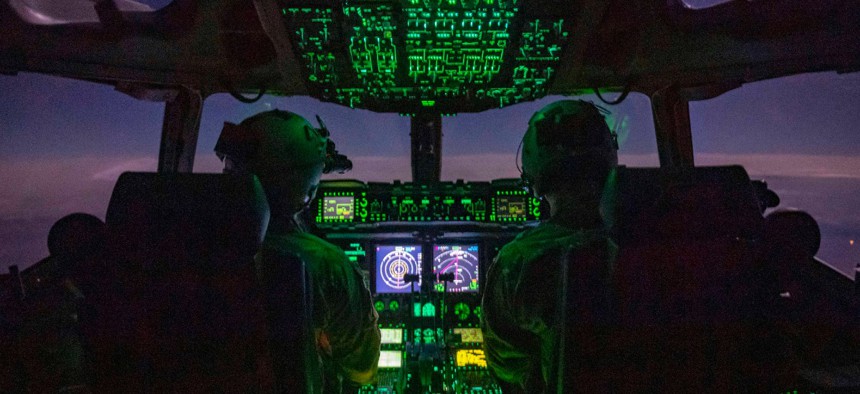SAIC Lands $319M Kessel Run Program to Improve Air Force C2 Systems

Photo by Air Force Staff Sgt. Taylor Harrison
Falconer Air Operations Center Weapon System Sustainment contract lets SAIC leverage its cloud and command-and-control expertise and expand its footprint with the Air Force.
Science Applications International Corp.’s recent win o f a $319 million Air Force contract gives the company the opportunity to flex its capabilities around command-and-control systems, digital systems engineering and cloud computing, all for a new customer.
“This is a great win for us because we don’t have a lot of command-and-control work with the Air Force,” said Vinnie DiFronzo, SAIC’s senior vice president of operations for defense. “We have Space Force, the Army and the combatant commands but this is the first major Air Force C2 win for us.”
SAIC will partner with the Air Force’s Kessel Run division on the contract known as Falconer Air Operations Center Weapon System Sustainment. The Falconer program helps with planning, directing and assessing, air, space and cyberspace operations. Air operations centers take in, analyze and disseminate command and control and intelligence data to support operations around the globe.
"The goal is better situational awareness and better decision making and decision making aids," he said.
The contract to support these centers have typically fallen to original equipment manufacturers, but the award to SAIC indicates a shift in priorities, DiFronzo said.
“Cyber has always been a major priority but now there is more emphasis on the cloud and integration and being able to modernize the C2 software for a cloud infrastructure,” he said. “They are trying to get the benefits of the cloud as well as the benefits of how digital engineering has evolved.”
A major plus for SAIC in the competition for the Falconer contract is that the company is the prime contractor on the $727 million Air Force Cloud One contract for cloud hosting and platform services. It uses Amazon Web Services, Microsoft Azure and Google Cloud.
“We have extensive experience working with both the cloud service providers as well as working on the migration of legacy applications into the cloud from a transformation standpoint,” DiFronzo said.
Another plus is the leadership team for SAIC, which includes a program manager with 30 years of experience working as a leader in the air operations center environment and a chief architect with extensive experience working with Kessel Run and modernization within the Air Force.
The contract also fits a defense trend where command-and-control systems must operate across the different domains of air, space, land, sea and cyber. The Falconer contract calls out cyber as one of its primary domains along with air and space.
“That is really key because of the change in the security environment over the last 15 years,” DiFronzo said. “This C2 system being modernized properly is really key to being able to gain full synergy between those different domains.”
The modernization is critical to the Air Force’s development an advanced battle management system and as part of the Defense Department-wide Joint All-Domain Command Control, or JADC2, system.
The Falconer contract is about developing a mission planning tool that is tied all of the air operations centers at each of the regional combatant command communities. around the globe as well as being actively involved in combat operations, he said.
“There is the planning side and then there is the execution side,” DiFronzo said. “With an ongoing air war, it is the integration of that from the joint space, cyber and air standpoint that is managed through the (Falconer) Air Operation Center.”
The contract also is an example of how software drives everything and how IT plays a vital role in the mission of government agencies, particularly on the defense side of the market. Better sharing of data is critical.
“We have systems like the AOC (Air Operations Center) that have great information available internally but isn’t not fully integrated from a machine-to-machine standpoint,” DiFronzo said. “As you modernize, you are able to improve the data architecture and the networking so you can better leverage things like artificial intelligence.”
The Air Force has been on a path toward better software development by adopting more DevSecOps and agile development.
“I think that’s one of the reasons they picked us is they understood we could help them accelerate that,” he said. “We are very excited to have the kind of partner that is looking towards the future and being able to fully leverage evolving technologies.”






